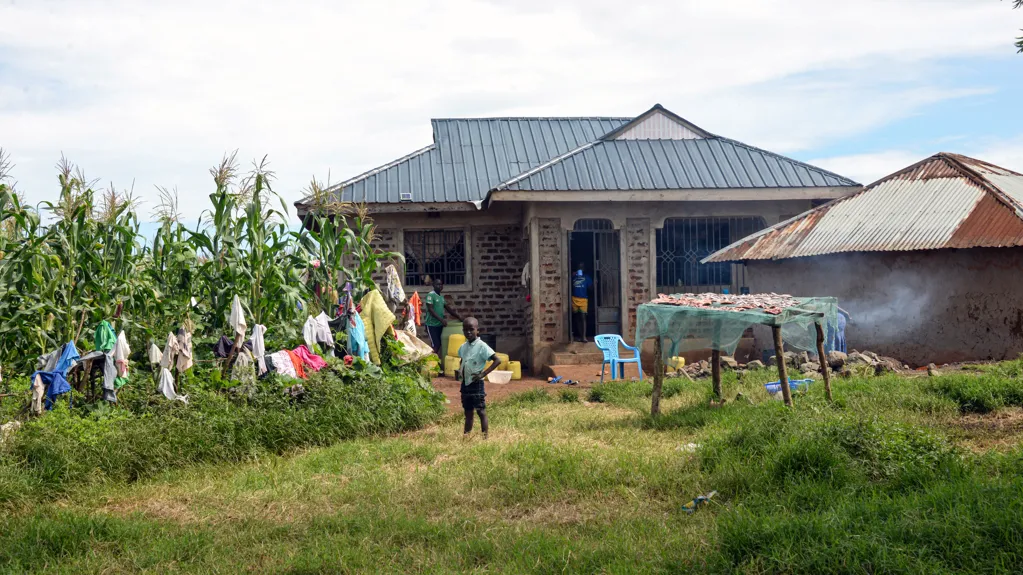Simply giving money to poor families at certain times reduced deaths among young children by nearly half, a new study found.
Of every 1,000 children born in Kenya, 32 don't make it to their first birthdays. Study after study has explored how to improve those staggering numbers, in Kenya and elsewhere.
On Monday, a decade-long study on alleviating poverty stumbled onto a straightforward solution. Giving $1,000 to poor families lowered infant mortality rates by nearly half, and deaths in children under 5 by 45 percent.
Those are much bigger drops than have been credited to routine immunizations, for example, or bed nets to prevent malaria.
"This is easily the biggest impact on child survival that I've seen from an intervention that was designed to alleviate poverty," said Harsha Thirumurthy, an economist at the University of Pennsylvania who was not involved in the work.
The decline in infant mortality is a "showstopping result," he said.
The outcomes suggest that delivering even smaller amounts of money to families -- especially those that live near a hospital -- immediately before or after the birth of a child might allow women to seek medical care and drastically improve their children's chances of survival. The study was published on Monday by the National Bureau of Economic Research.
More than 100 low- and middle-income countries have explored so-called cash transfers, especially after the pandemic began. Generally the experiments have found that giving money to poor families improves school attendance, nutrition and use of health services.
Misuse of the funds -- spending them on alcohol, gambling or otherwise wasting them -- has proved to be a minor concern, said Edward Miguel, a development economist at the University of California, Berkeley, and a leader of the new study.
But most cash transfer programs were not large enough, involved too little money or did not track the recipients for long enough to home in on details, he said.
In this case, the nonprofit group GiveDirectly -- which, as its name suggests, helps individual donors send money directly to people living in poverty -- provided the cash transfers.
Between 2014 and 2017, GiveDirectly provided $1,000 in three installments over eight months to more than 10,500 poor households in Siaya County, Kenya. The amount covered roughly 75 percent of the recipients' average expenses for a year.
The donation was unconditional; families were selected at random to receive money and were given no suggestions on how to spend it.
An independent team of researchers, including Dr. Miguel and his colleagues at U.C. Berkeley and Oxford University in Britain, then examined the effects. Over a decade, the researchers conducted four census surveys, collecting data on births, deaths, employment and other factors in more than 650 villages. They compared data from households that received the funds with those that did not.
In a subset of more than 10,000 families -- only some of which had received the cash -- the researchers went even deeper, asking about details of health behaviors such as seeking prenatal care.
Consistent with other programs, the team saw an effect on poverty. Every dollar transferred generated $2.50 in business activity, observable more than a mile away. The families that received cash did better even during the Covid-19 pandemic and a drought.
But the biggest gains were in child mortality, which the researchers had not expected. And the improvements became obvious immediately.
"When you come across an intervention that reduces child mortality by almost a half, you cannot understate the impact," said Dr. Miriam Laker-Oketta, a physician at Makerere University in Kampala, Uganda, and a senior research adviser at GiveDirectly.
When the women in the villages didn't have money, they were more likely to skip meals and prenatal appointments, perform hard labor long after it had become unsafe and give birth at home rather than at a hospital. The infusion of cash helped pregnant women rest and deliver safely, the researchers said.
The findings are particularly relevant as the United States and other countries have slashed foreign aid, putting children's lives at risk, Dr. Miguel said. The results show that even individual donors "can do something very meaningful with a limited amount of money," he said.
The size of the study allowed the researchers to dig deeper into the reasons for the improvements. They collected geolocation data on clinics, dispensaries and hospitals in and near the study area and recorded how long it took people to get to hospitals.
The money made the biggest difference when given to pregnant women who lived close to hospitals with physicians. And funds had the biggest effect when given right before or after the birth of the child.
"Ultimately, this study really shows that the best way to save the life of a child is to give a mother money at the time when they need it the most," Dr. Laker-Oketta said.
There were other findings. Children in families who received the cash were 44 percent less likely to go to bed hungry. And pregnant women given funds worked half as much in their third trimester and in the months after birth compared with other women.
"I'm quite confident each of the things we emphasize is playing a role," Dr. Miguel said. "But it's hard to quantify exactly how much."
One shortcoming of giving the money in a big chunk is that as the cash dwindles, so do the benefits. Regular installments of smaller amounts may better sustain the benefits, said Dr. Thirumurthy, the University of Pennsylvania economist.
"Having that kind of steady infusion of cash would give you more steady results," he said. "Maybe not as dramatic, but more reliable."
